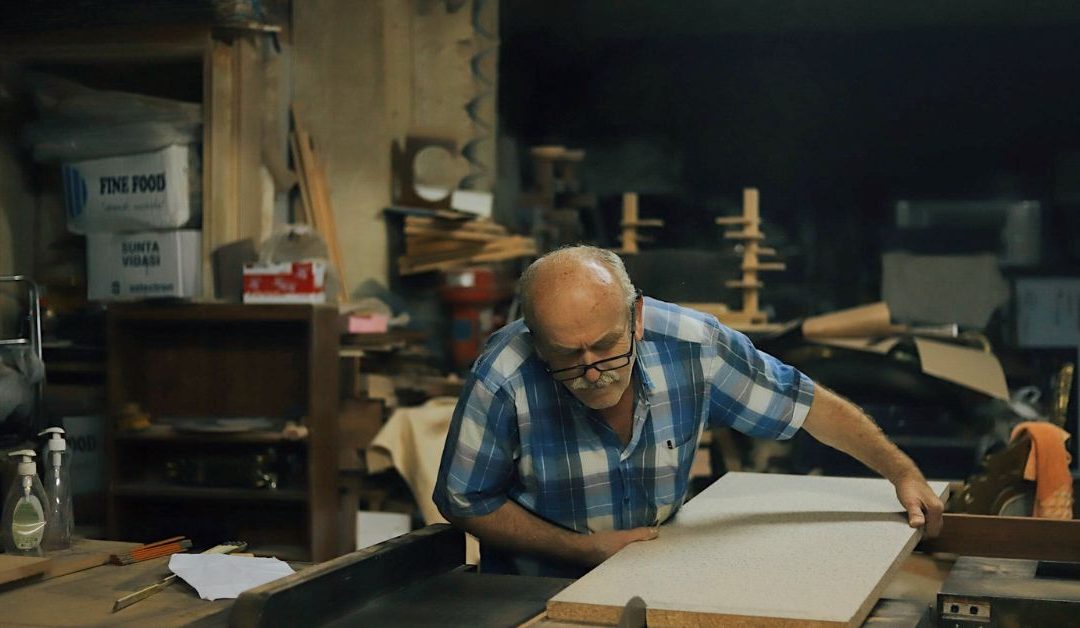Morocco’s woodworking has a long and interesting history that is much connected to the country’s culture. It started a long time ago, when people made furniture using natural materials like wood, bones, and animal hides.
Over the years, Moroccan woodworking was so influenced by many different groups of people. Traders, conquerors, and artisans from other cultures all had a part in shaping woodworking in Morocco. This article will give you an overview of how wooden crafts developed over time and how they are still important in Morocco today.
We will focus on the techniques used by skilled craftsmen who learned from their ancestors. We will also talk about how modern designers take inspiration from the old ways while making it more up-to-date for today’s people.
By learning about this ancient industry, we can understand its past and why it’s still valued by many people today.
Prehistoric Origins Of Furniture
Long ago, people in Morocco started making furniture using simple tools like stone hammers and chisels. They would carve beds and chairs out of large tree trunks.
These furniture pieces were more than useful items. They showed someone’s status in their society. Some archaeologists have found evidence of wealthy individuals owning beds carved from a single piece of wood.
Early Moroccan furniture wasn’t only practical and symbolic. Decorated with intricate patterns, the artisans wanted to make the objects beautiful and valuable. Today, you can still see these designs on traditional items made by modern Moroccans. Attention to detail is a special trait of Moroccan woodworking.
This shows that humans have always enjoyed expressing themselves through crafting. This passion will continue for many years to come.
Now let’s learn about how Phoenician traders influenced Moroccan carpentry long ago.
Phoenician Influence
The Phoenicians, known as traders who had a big influence on woodworking in Morocco. They brought new ideas and materials through cultural exchange. They traded timber from North Africa and Southern Spain, which gave Moroccan artisans access to different types of wood. They introduced tools like saws, chisels, and planes used in carpentry.
The Phoenicians showed Moroccans how to make furniture using old ways. People in Morocco still make furniture like this today.
The Phoenicians spread awareness of Moroccan woodworking in Europe. European monarchs who were into the unique and rare ornaments crafted by skilled Moroccan artisans.
As demand for these works of art grew, Moroccan woodworkers gained a reputation for their high-quality creations. The next chapter in the history of Moroccan woodworking would come with the Roman occupation.
Now let’s explore how the Romans influenced woodworking in Morocco.
Roman Occupation
The Romans were in Morocco for a while, and they brought their own ways of making things. They taught Moroccans new methods of crafting, like using stones and making glass. This influenced the local artisans and added to their traditional styles.
Moroccan designs started to show up in Roman woodworking too. They carved detailed patterns on furniture and decorations, often using Islamic symbols. Some Moroccans even worked as craftsmen during the Roman time.
This mix of styles continued over time and shaped Moroccan woodworking. Even after the Romans left, the knowledge and techniques they brought stayed through generations. It became part of the Moroccan woodworking legacy we have today. The Romans played a big part in shaping Moroccan craftsmanship, even when the Islamic rule started.
Islamic Artisanship
Since Islam arrived in Morocco in the 8th century, Islamic artisanship has played a big role in Moroccan woodworking. Traditional crafts stayed through generations for many years.
A recent study by UNESCO reveals that more than 75% of Moroccans take part in traditional crafts such as pottery making and woodcarving.
Artisans use different types of wood depending on what is available. Popular choices include cedar, olive tree, cypress, and acacia woods.
In the 16th century, furniture pieces were often carved with Mughal-style geometric patterns. In the 19th century, designs featuring plants and animals became more common.
Moroccan artists pay great attention to detail when creating their pieces to make sure they last a long time.
Moroccan woodworking is special because it blends new and old techniques.
These two approaches create pieces that blend modernity and tradition, which appeals to people around the world.
It’s important to preserve this cultural heritage so that future generations can learn these ancient skills. Now, let’s explore how traditional techniques are used in Moroccan woodwork today…
Traditional Techniques
Moroccan woodworking is old and has a super interesting history. It came from tradition and culture, and artisans in each region teach their special techniques to the next generation. The artisans in Morocco care about the Earth, so they use materials that are good for it. They make things that last a long time and show their culture.
These skilled craftsmen use special methods to put pieces together. They use strong joints like mortise-and-tenon and dovetailing. They have many tools they use, like saws, chisels, planes, gouges, mallets, and braces & bits. With these tools, they make beautiful things out of wood.Coping Saw – used to cut curves into wood
- Tenon Saw – used to create tenons for joints or rabbets on boards
- Block Plane – used to trim surfaces level or smooth out edges
- Mortise Chisel – used to remove material from interior faces of a surface
- Spokeshave – use to round off corners or contour curved shapes
- Brace & Bit – used to drill holes into wood at any angle needed
These tools helped the craftsmen make wooden things and important parts of buildings like columns and doors. By learning design principles and choosing the right wood, they could create beautiful works of art.
Not only were these creations useful in everyday life, but they showcased Morocco’s rich heritage when displayed in homes. With this knowledge, the artisans were able to move on to more detailed designs, which we will discuss in the next section.
Intricate Design Elements
Moroccan woodworking is famous for its beautiful designs. The patterns on furniture pieces tell stories about Morocco’s culture and history. They are not only pretty, but they have a purpose and meaning. Skilled craftsmen create these works of art and pass down their knowledge through generations.
These wooden masterpieces, like doors, chests, tables, chairs, and trays, are more than decorations. They represent Morocco’s heritage and identity. It’s important to keep this tradition alive for future generations to appreciate.
Now, let’s look at contemporary design in Moroccan woodworking.
Contemporary Design
Moroccan woodworking has a long history and rich culture. Recently, some changes have happened to make it more modern while still keeping its roots. These changes include using safe materials and tools, like solar power and recycled materials. They use new finishes that are safe for the environment. With modern tools, the artisans can make detailed designs faster than before.
These improvements bring together tradition and innovation. They help reduce waste and make sure the products are sustainable. It means that more people can enjoy the beautiful wooden pieces from Morocco because they are more available and affordable.
These changes are making a big impact on how people see Moroccan woodworking around the world. It shows modern traditional crafts while still keeping their special qualities.
- Safe methods are being embraced more
- Modern tools provide increased efficiency
- High quality standards ensure lasting results
The changes happening in Moroccan woodworking show us what it could be like in the future. Even though it’s an old craft, it can still be important in our modern world.
Modernization Of Traditional Crafts
Moroccan woodworking has a long history and has changed a lot over time. In the 19th century, colonial influences brought new ideas and improvements to the craft. They introduced better tools like saws, taught artisans new skills, and found ways to protect materials from damage.
These changes have made Moroccan woodworking even better than before. Artisans now have more options and use advanced techniques. They know how to join wood together and work with different types of wood. This shows that traditional Moroccan crafts are still important and valued today.
It will be exciting to see how Moroccan woodworking continues to evolve in the future.
Skillful Artisanship
Moroccan woodworking is a special part of the country’s culture that has been around for a long time.
Skilled craftsmen have passed down their techniques and designs from one generation to another.
They have improved their skills over time, creating unique and beautiful pieces.
Craftsmen in Morocco are creative and skilled, which makes their woodworking special.
People have cherished Moroccan woodworking for many years because it is something special.
Traditional Craftsmanship
People in Morocco have been practicing woodworking for a long time, and it’s a big part of their culture. In Morocco, people learn how to do woodworking from their moms, dads, and grandparents. They use these skills to make pretty and special things.
As time has passed, the woodworkers have gotten even better at what they do. They have learned new techniques and improved their craftsmanship. Now, they can create amazing pieces that show off their creativity and skill.
Because of their talent, Morocco is famous as a place where great woodworking happens. The woodworkers use different types of wood and create intricate designs that represent their culture.
They are proud of their woodworking tradition and want to keep it alive for future generations. By doing so, they can preserve their heritage and show the world the beauty of Moroccan woodworking.
Woodworking Techniques
Skilled artisans in Morocco have been doing woodworking for a long time. They learn special techniques from their parents and grandparents and use them to make pretty things. They use materials like cedarwood, which is good for the environment. Their carvings and furniture show the culture of their region. In Morocco, woodworking is also seen as a sign of being rich and important. It’s a way to remember and celebrate the country’s history and culture.
The Ongoing Legacy Of Moroccan Woodworking
In Morocco, woodworking is a very important tradition that has stayed for a long time. Talented people in Morocco’s towns and cities make beautiful things using wood that comes from nature and is not harmful. They make furniture, art pieces, and musical instruments like ouds and drums. You can see their craftsmanship in ornate chairs, doors with fancy designs, and unique wooden lamps. Their work supports the environment by using renewable resources like cedarwood. It helps the economy and keeps the culture alive. Moroccan woodworking is a blend of old and new, which makes it unique and appreciated everywhere.
Frequent-Asked Questions
Which Types Of Wood Do Artisans Use In Traditional Moroccan Woodworking?
In traditional Moroccan woodworking, artisans often use sourced cedar and walnut woods.
They dye these woods using different techniques, like staining with natural dyes or bleaching for lighter colors.
The skilled craftsmen have been working for a long time to make their work very detailed. It is an important part of Moroccan culture and history.
What Are The Benefits Of Moroccan Woodworking Compared To Other Types Of Woodworking?
Moroccan woodworking is special and offers many advantages that other types of woodworking don’t have.
The craftsmen use traditional techniques like dyeing, cutting,, and shaping to create amazing art pieces.
These pieces are not only pretty, they are useful and strong – they can last for a very long time.
And because they use natural materials, each piece is unique and different from others.
So, if you want something unique and timeless for your home, Moroccan woodwork is a great choice.
How Has Modern Technology Changed Moroccan Woodworking?
Modern technology has affected the art of Moroccan woodworking.
Nowadays, there are new ways of doing Moroccan woodworking that use machines instead of old tools and techniques.
As a result, modern tools now help craftsmen create detailed designs easier and faster than before.
These technologies also allow them to have more control and more precision over their work.
But, even with these changes, the important principles of Moroccan woodworking remain the same. Skilled craftsmen still play a vital role in creating beautiful pieces.
What Safety Precautions Should People Take When Working With Moroccan Woodworking Tools?
When using woodworking tools, make sure to choose the right ones and keep them in good condition. Always wear eye protection like goggles or face shields to stay safe from flying debris. People have long known that taking these safety measures is very important in Moroccan woodworking.
Are There Any Organizations Or Groups Dedicated To Preserving The Art Of Moroccan Woodworking?
For centuries, people have formed organizations to preserve the art of Moroccan woodworking. These groups work hard to protect the culture and techniques that have stayed through generations.
Two important organizations that support local craftsmen in Morocco are the Royal Institute of Traditional Arts (RITA) and the Association for Handicrafts Promotion (APH). They help artisans by giving them resources and teaching them important skills.
There are smaller groups that do community outreach programs and workshops to keep the craft alive. These initiatives are important in preserving the art of Moroccan woodworking.
Moroccan woodworking is an old and important art that has been around for a very long time. It has had a big impact on the local culture and is still seen today.
Craftsmen in Morocco use traditional methods to make beautiful furniture and unique art pieces. They work with different kinds of wood found in their area.
With modern technology, they can create new and more complicated designs in a faster and safer way.
But it’s important that we keep this art form alive by remembering its cultural significance.
Imagine if we lost this amazing tradition. That would be a big loss for our society.
We need to make sure Moroccan woodworking continues so that future generations can see its beauty and amazing skills.







